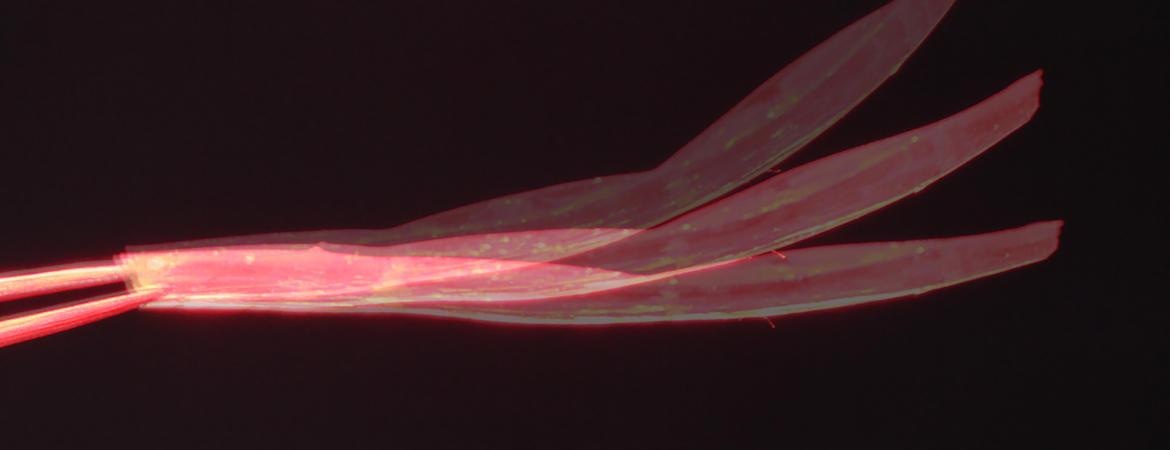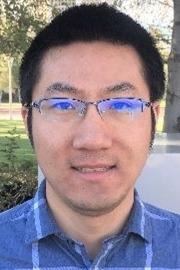AZoRobotics speaks with Dr. Zhiwei Li from the University of California Riverside about a novel floating robotic film that has the potential to be trained to absorb oil spills at sea or eliminate contaminants from drinking water.

Image Credit: Bernstein, J., (2022) Light-powered soft robots could suck up oil spills. [online] News. Available at: https://news.ucr.edu/articles/2021/12/02/light-powered-soft-robots-could-suck-oil-spills
What inspired your research into developing a robotic film that could be trained to hoover up oil spills at sea or remove contaminants from water?
Natural creatures can survive in changing environments because they can adapt to such changes by adjusting their body functions. Mimicking this feature will enable the design of self-adaptive robots that can work efficiently and sustainably.
Inspired by the interesting locomotion of water striders, a swimming robot is designed based on a soft steam engine. This film robot can potentially be used to hoover up oil spills at sea or remove contaminants from water powered by sustainable energy.
What motivated your research into creating soft robots that are sustainable?
We wanted to make soft robots sustainable and adaptive on their own to changes in the environment. If sunlight is used for power, this machine is sustainable and will not require additional energy sources. Using sustainable energy is a promising way to overcome the challenge of the energy crisis that we are facing.
Making working robots and mechanical engines sustainable, particularly the ones working under sunlight, can realize this purpose and can be used in future human communities.
You named the film ‘Neusbot’ after the category of animals known as neustons. Why did you decide upon such a name?
Neuston is a category of animals that inhabit and live on water surfaces. They can move freely on many water surfaces due to their unique body features and functions. Water striders are a famous example of neuston. Since our robot has a hydrophobic body, it can easily flow on water surfaces. Once irradiated by light, they can move and turn freely, just like neuston. That is the main reason why we decided to name it “neuston.”
According to your research, the robotic film is powered by light and fueled by water. Can you give an overview of how this works?
The robotic film has three layers, the bottom and top hydrophobic layers and the middle hydrogel layer. This middle layer can absorb water and contains plasmonic nanoparticles for converting light into heat. The high temperature will vaporize the water in the middle hydrogel layer under light irradiation, leading to steam generation. As it is powered by light, this vapor bubble generation induces mechanical oscillation.
This robot ultimately uses water as the fuel and as the working fluid. It works in a similar way to the classic hot steam engine.
While other scientists have created films that bend in response to light, they have not been able to generate the adjustable, mechanical oscillation of which Neusbot is capable. How did your team overcome such challenges?
Many previous designs can realize mechanical bending under light irradiation. Such mechanical bending is determined by the film temperature and thus has a static equilibrium as the final film temperature stabilizes under light irradiation.
The key challenge in realizing self-adaptive oscillation is introducing a controllable, environment-responsive perturbation to the thermo-mechanical equilibrium.
Water vaporization is a common phenomenon but has been used to design the classic hot steam engine, which powered the industrial revolution. As water vaporizes, the generated steam expands to mechanical power. We use steam generation as a regular and controllable perturbation to the thermo-mechanical equilibrium in the soft films.
In this way, regular steam bubble generation induces mechanical oscillations. More importantly, its generation rate depends on temperature and light intensity, making the soft oscillators adaptive to light intensity changes.
Can you explain how the tri-layer film behaves in a similar manner to a steam engine?
The trilayer film is made of top and bottom hydrophobic layers and a middle hydrophilic layer. The middle hydrogel can absorb water (1300% by weight to the film mass) and contain magnetic/plasmonic nanoparticles.
Under light irradiation, the nanoparticles can efficiently convert light energy into heat, increasing the temperature of the trilayer films. This sequence of events vaporizes the surrounding water and generates steam bubbles.
At the same time, the middle layer serves as a hot chamber such that the generated steam increases its pressure and perturbs the thermo-mechanical equilibrium of the trilayer. As the steam bubbles expand and escape from the middle layer, the trilayer begins to oscillate.
In a classic hot steam engine, the water vaporizes to increase the pressure of the hot chamber, leading to controllable volume expansion and mechanical work. Therefore, both our soft engines and the classic hot steam engines use steam as the working fluid to power mechanical work. As the steam is consistently generated, periodic mechanical oscillation and work can be realized.
How do you control the direction in which the Neusbot travels?
We control the irradiation position of the laser. For example, irradiating light on the right side of one end of the film robot allows the robot to travel to the left. This simple operation provides easy control over the traveling direction of the robot on water surfaces.
The current version of the Neusbot only features three layers. Do you plan on adding any other layers to the film in the future?
Yes, the open design makes it possible to add additional functional layers to the film robot. For example, a highly absorbent layer can be added to the current version, and it can be used to clean oil spills on the surface of the sea. We expect that one day they can act just like a commercial vacuum cleaning robot and can be used to remove water contaminants from the surface of water.
What are the potential applications of this robotic film?
The first potential application is to train and functionalize the film robots to hoover oil spills at sea or remove contaminants from drinking water. However, there is a long way to go to realize these applications.
This robotic film can also be used to convert solar energy to mechanical energy once the photothermal conversion efficiency can be optimized. We are moving in this direction by introducing high-performance, low-cost nanoparticles into the robotic films.
What are the next steps for your research?
The current version of Neusbot only features three layers. We want to further functionalize the robots with a fourth layer, which can be used to absorb oil or other chemicals. We are also working on controlling its oscillation mode more precisely.
Essentially, we hope to generate more complex mechanical oscillation modes that even nature itself can not produce.
About Dr. Zhiwei Li
 Dr. Zhiwei Li is a postdoctoral researcher and works with Prof. Yadong Yin in the Department of Chemistry at the University of California Riverside. His current research includes the synthesis of magnetic and hybrid nanoparticles and their assembly into smart nanostructured materials. His research topics cover photonic crystals, plasmonic superstructures, magnetic assembly, soft robotics and nanomedicine.
Dr. Zhiwei Li is a postdoctoral researcher and works with Prof. Yadong Yin in the Department of Chemistry at the University of California Riverside. His current research includes the synthesis of magnetic and hybrid nanoparticles and their assembly into smart nanostructured materials. His research topics cover photonic crystals, plasmonic superstructures, magnetic assembly, soft robotics and nanomedicine.
He received his Ph.D. degree in physical chemistry from the Department of Chemistry at the University of California Riverside.
Disclaimer: The views expressed here are those of the interviewee and do not necessarily represent the views of AZoM.com Limited (T/A) AZoNetwork, the owner and operator of this website. This disclaimer forms part of the Terms and Conditions of use of this website.